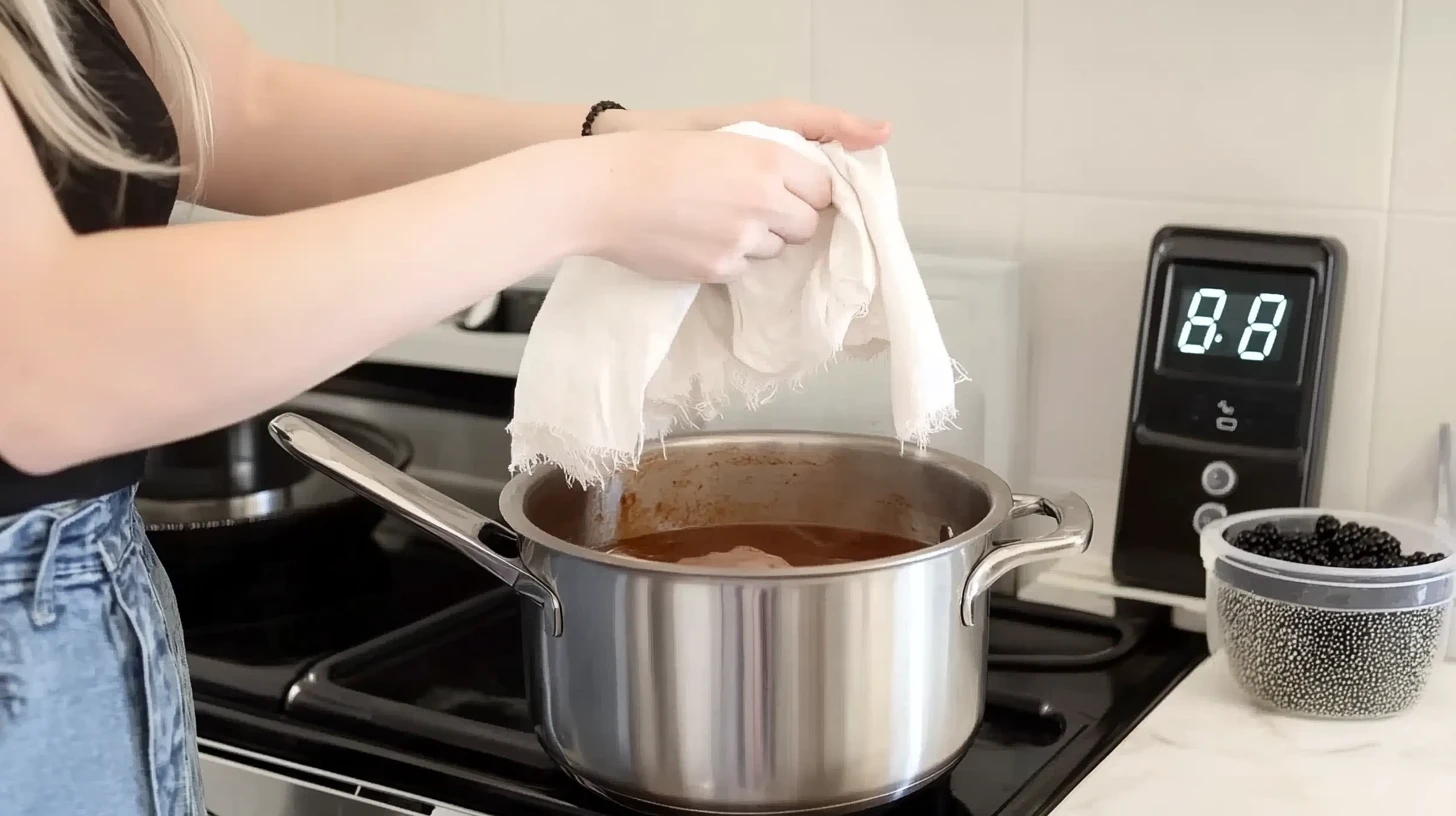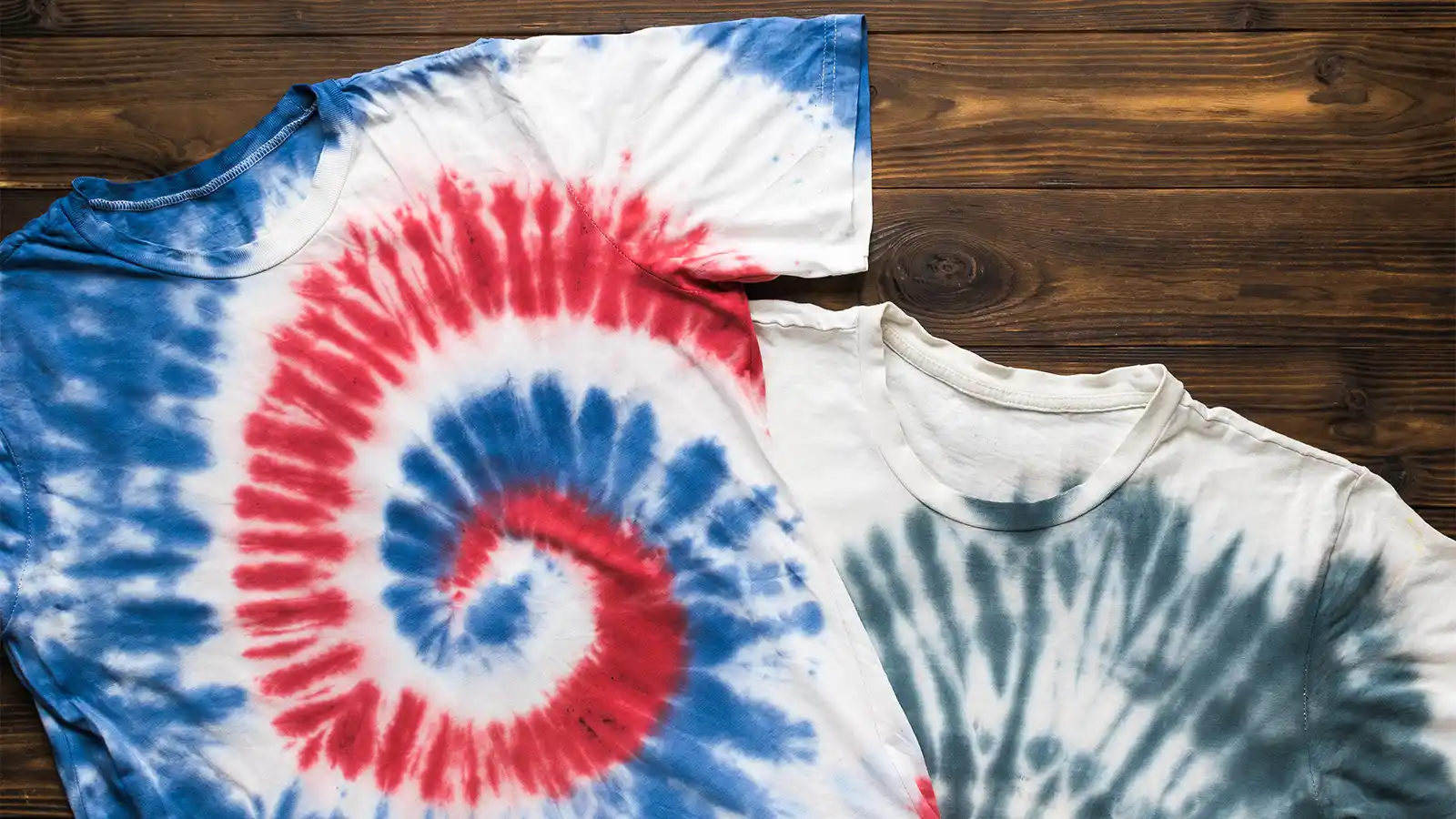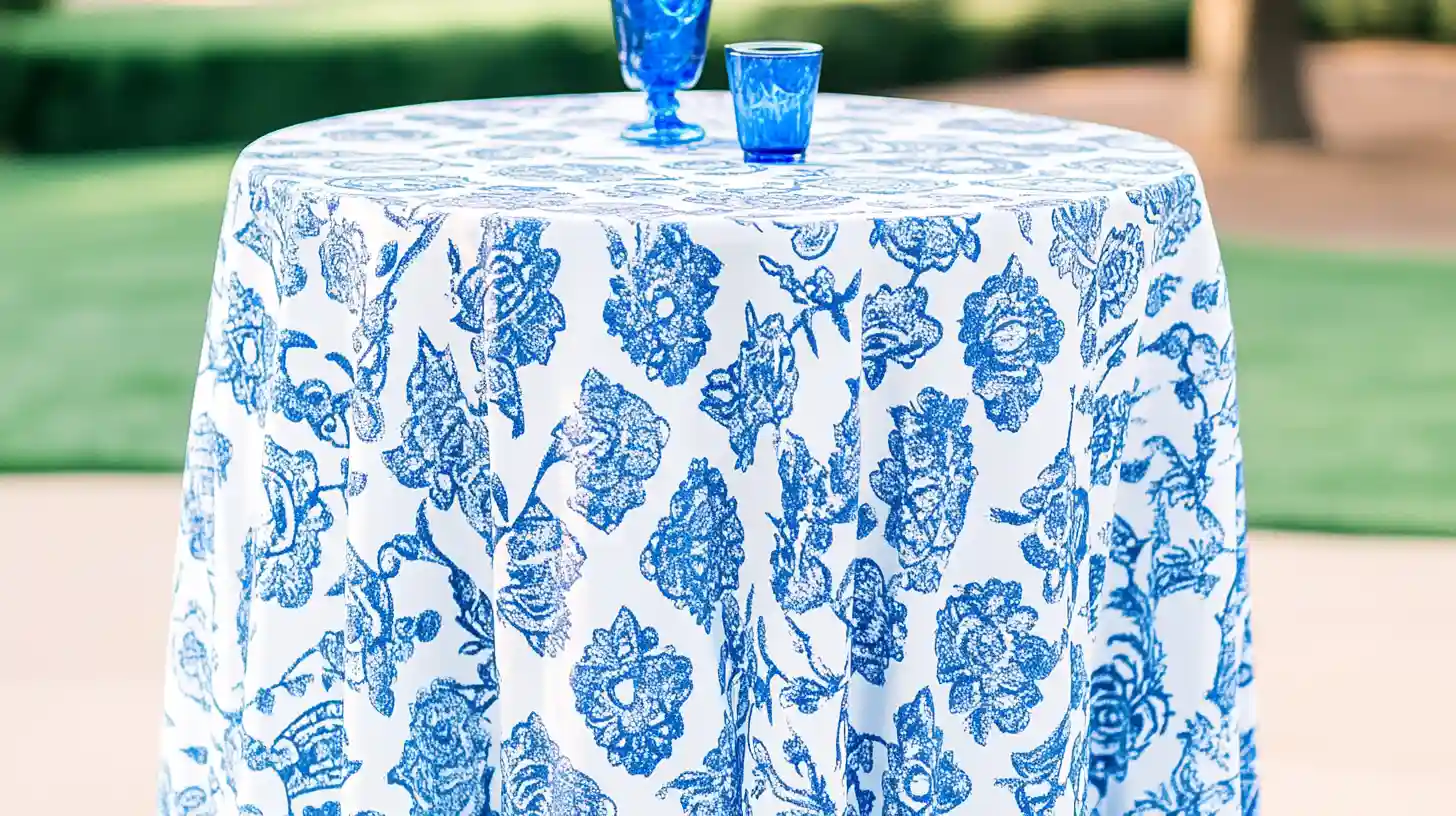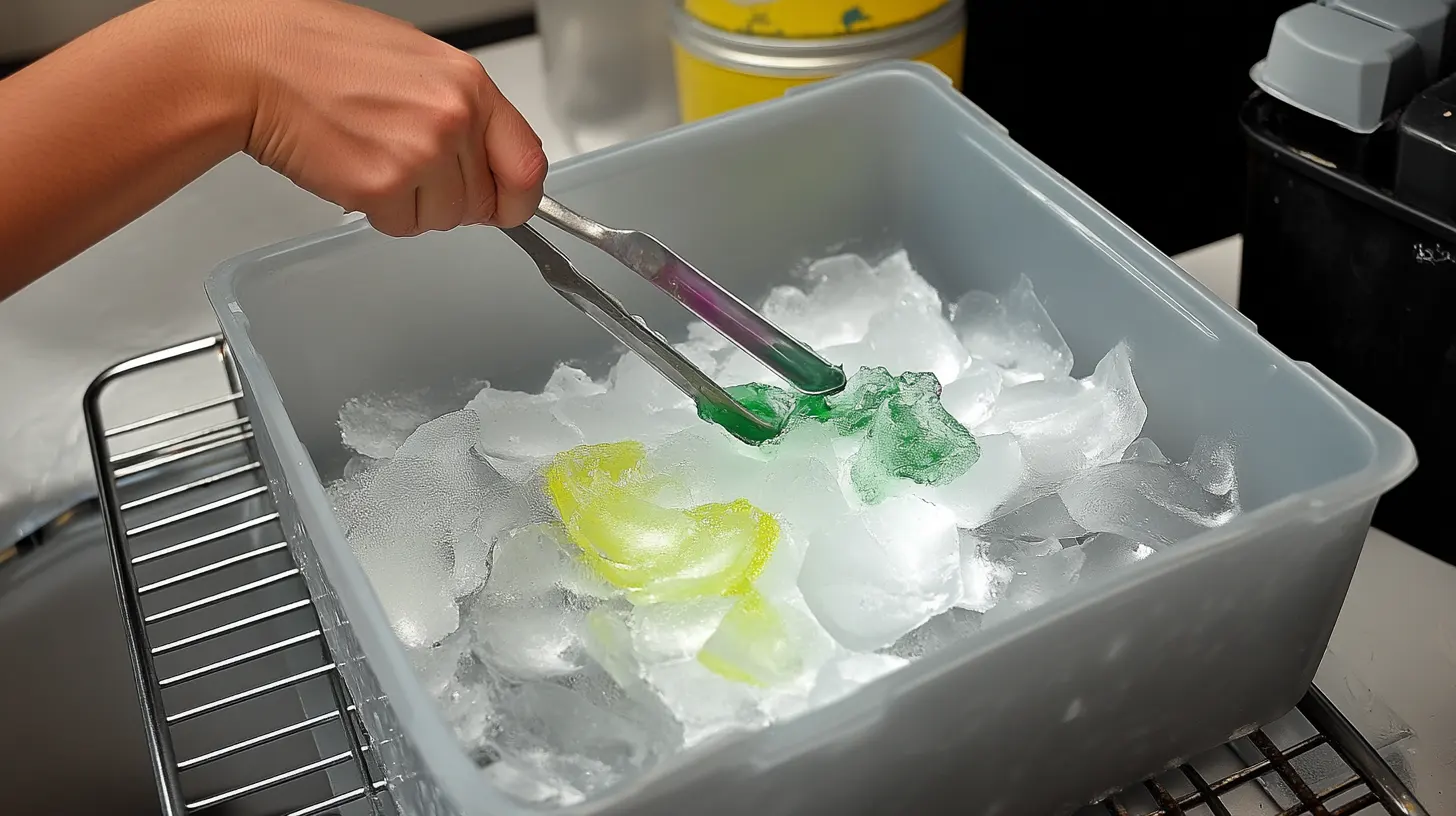Dyeing linen is an exciting way to breathe new life into your fabric, transforming it into a vibrant expression of your style! Whether you're looking to revamp old linens or create stunning new pieces, the process is both accessible and rewarding.
With a splash of color and a dash of creativity, you can unlock endless possibilities for your home decor or wardrobe.
So gather your materials, unleash your inner artist, and dive into the colorful world of linen dyeing—where your imagination is the only limit!
Key Takeaways
- Choose fiber-reactive dyes for vibrant, long-lasting colors on linen.
- Pre-wash linen to remove finishes. Soak it in clean water for even dye distribution.
- Various dyeing methods offer unique results. Follow instructions carefully for each technique.
- To maintain vibrant colors, wash separately in cold water, store away from sunlight, and iron on a low setting.
How to Choose the Right Dye
Choosing the right dye for linen is crucial to achieving vibrant, long-lasting colors.
Fiber-reactive dyes are your best bet. They create a permanent bond with linen, ensuring the colors stay vivid.
For versatility, consider Rit All-Purpose Dye. It works well with various dyeing techniques.
It's not always easy to achieve the desired color for fabrics with more than 35% synthetic fibers, such as polyester. Rit DyeMore is the go-to choice to ensure proper absorption and color retention.
Before committing to a dye, test colors on a small fabric swatch.
This prep ensures you achieve the perfect hue for your linen project.
How to Prepare the Linen
Start by thoroughly washing your linen in warm, soapy water to eliminate any finishes, dirt, or residues that might interfere with dye absorption. Avoid using fabric softener.
Weigh your dry fabric before pre-washing to determine the correct amount of dye you'll need later.
After washing, rinse the linen thoroughly to remove all soap.
Once pre-washed, soak your linen in warm water for at least 30 minutes to ensure even dye absorption.
How to Dye Linen: 6 Easy and Effective Methods
When it comes to dyeing linen, you've got several methods to choose from, each with its own benefits.
Method 1: Use a Stove

For a vibrant and even color, using a stove requires heating water to 54-60°C (130-150°F) and adding salt and soda ash to enhance dye absorption.
- Start by filling a large stainless steel pot with enough water for your linen fabric to move freely.
- Add 3-9 tablespoons of salt and 1.5-4.5 tablespoons of soda ash per 450g of fabric to the dye pot.
- Immerse the linen fabric, stirring continuously for 30 minutes to 1 hour.
- Maintaining an even temperature is crucial, so keep an eye on the heat.
- Once done, rinse the linen until it runs clear. Then, wash it with mild soap before drying.
Method 2: Use a Washing Machine

Using a washing machine to dye linen is efficient, especially for larger items, ensuring even color distribution.
- First, make sure your linen is damp and load it into the washing machine.
- Add the dye pod or liquid dye directly into the drum.
- Select a warm water cycle that lasts about 20 minutes to activate the dye effectively.
- After the dyeing cycle, rinse the linen in cool water until the water runs clear, removing any excess dye.
- Finally, follow up with a gentle wash using cold water and a mild detergent to set the dye and maintain its vibrancy in future washes.
This method provides consistent results with minimal effort.
Method 3: Tie Dye

Tie-dyeing linen lets you create unique, colorful patterns by manipulating the fabric before applying dye.
- Start by gathering the fabric and securing it with rubber bands in various patterns.
- Mix fiber-reactive dyes according to the instructions.
- Apply the dye to the linen, ensuring you cover all desired sections.
- Once dyed, let the fabric sit for 6-8 hours to allow the dye to set.
- Afterward, rinse the linen in cold water until it runs clear.
- Finally, wash the dyed linen with a gentle detergent to fix the colors.
Method 4: Dip Dye

Dip dyeing linen creates beautiful gradient effects by partially immersing the fabric in a dye solution.
- Start by preparing your dye bath with warm water at around 60°C (140°F).
- Immerse the linen fabric gradually, controlling the color intensity by how long each section stays in the dye. For a darker gradient, submerge sections longer, aiming for 10 minutes to 1 hour.
- After achieving the desired effect, rinse the fabric in cold water until it runs clear.
- Wash the linen with mild detergent to set the color and prevent bleeding.
Method 5: Batik

Another captivating method to explore for dyeing linen is Batik. It's an ancient art form that uses hot wax to create intricate, colorful patterns.
- Start by sketching your design on the linen.
- Then, use a tjanting tool to apply melted wax to the areas you want to remain undyed.
- Once the wax hardens, immerse the linen in a dye bath. The exposed areas absorb dye evenly, while the waxed sections stay unchanged.
- To reveal the pattern, remove the wax by boiling the fabric or melting it with an iron.
For multiple colors, reapply wax to preserve certain areas, and dye again with different colors.
Method 6: Ice Dyeing

When you're ready to try a unique and vibrant method, ice dyeing offers a stunning way to transform your linen fabric.
- Start by ensuring your linen is pre-washed and damp, which helps the dye bond effectively.
- Lay your linen on a sloped surface, then cover it with ice cubes.
- Sprinkle the dye powder over the ice. Let ice melt and disperse the colors into beautiful, organic patterns.
- This process takes several hours as the ice gradually melts, infusing the dye into the fabric.
- Once the ice completely melts, rinse the linen in cold water until the runoff is clear.
Tips and Tricks for Dyeing Linen
For optimal dyeing results, there are some helpful tips and tricks to keep in mind.
How to Achieve Different Shades and Tones
To get lighter shades, dilute your dye with more water or reduce the dyeing time to under 10 minutes.
For richer tones, pre-soak your linen using a vinegar solution to enhance color absorption.
Experiment with varying dye concentrations for different effects—use more dye powder for darker shades or less for pastel tones.
Mixing dyes also creates unique shades, like combining blue and yellow for different greens.
This flexibility lets you customize your linen's final look.
How to Fix Common Dyeing Issues
Achieving the perfect shade can be tricky, so here are some tips for fixing common dyeing issues.
- To ensure an even color, constantly agitate the fabric during dyeing.
- If you notice the color is lighter than expected, repeat the process or increase the dye concentration.
- Always rinse dyed linens in cold water until they run clear to prevent future color bleeding.
- For unwanted color shifts or stains, use Rit Color Remover to strip the dye before re-dyeing.
These steps will help you correct any issues and get the perfect shade on your linen.
How to Care for Dyed Linen
To keep your dyed linen bright, wash it separately in cold water with a gentle detergent for the first few washes.
For longer-lasting color, use Rit ColorStay Dye Fixative after dyeing. This product helps lock in bright colors and extends the life of your dyed linen.
Store your items away from direct sunlight to avoid fading. Iron or steam your fabric on a low setting to keep it looking fresh without causing damage.
By following these instructions, your dyed linen will stay bright and last long.
Conclusion
In conclusion, dyeing linen at home is straightforward if you choose the right dye and properly prepare your fabric.
Whether you opt for stovetop or washing machine methods, ensure your linen is damp for even color. Rinse thoroughly, air dry, and iron on low.
Follow these steps, and you'll be able to enjoy beautifully dyed linen every time.
Learn more sewing projects on the Longan Craft Blog, and dive into the fabric world with Longan Craft!
FAQs
What Kind of Dye Do I Use on Linen?
Use fiber-reactive dyes for linen. They bond permanently with the fabric, ensuring vibrant, long-lasting colors. Rit All-Purpose Dye is also suitable for dyeing natural fibres like linen.
Does Rit Dye Work on Linen?
Yes, Rit dye works on linen. With proper application, you'll get vibrant colors.
Can Linen Clothes Be Dyed?
Yes, you can dye linen clothes. Fiber-reactive dyes bond permanently with the fabric, yielding the best results. Start with white or off-white linen; always pre-wash to remove any finishes.
How Do I Change the Color of Linen?
To change the color of linen, start by washing it to remove residues. Use fiber-reactive dyes and follow dye bath instructions. Immerse the fabric, stir until the desired color is achieved, then rinse and wash to set the dye.


0 comments